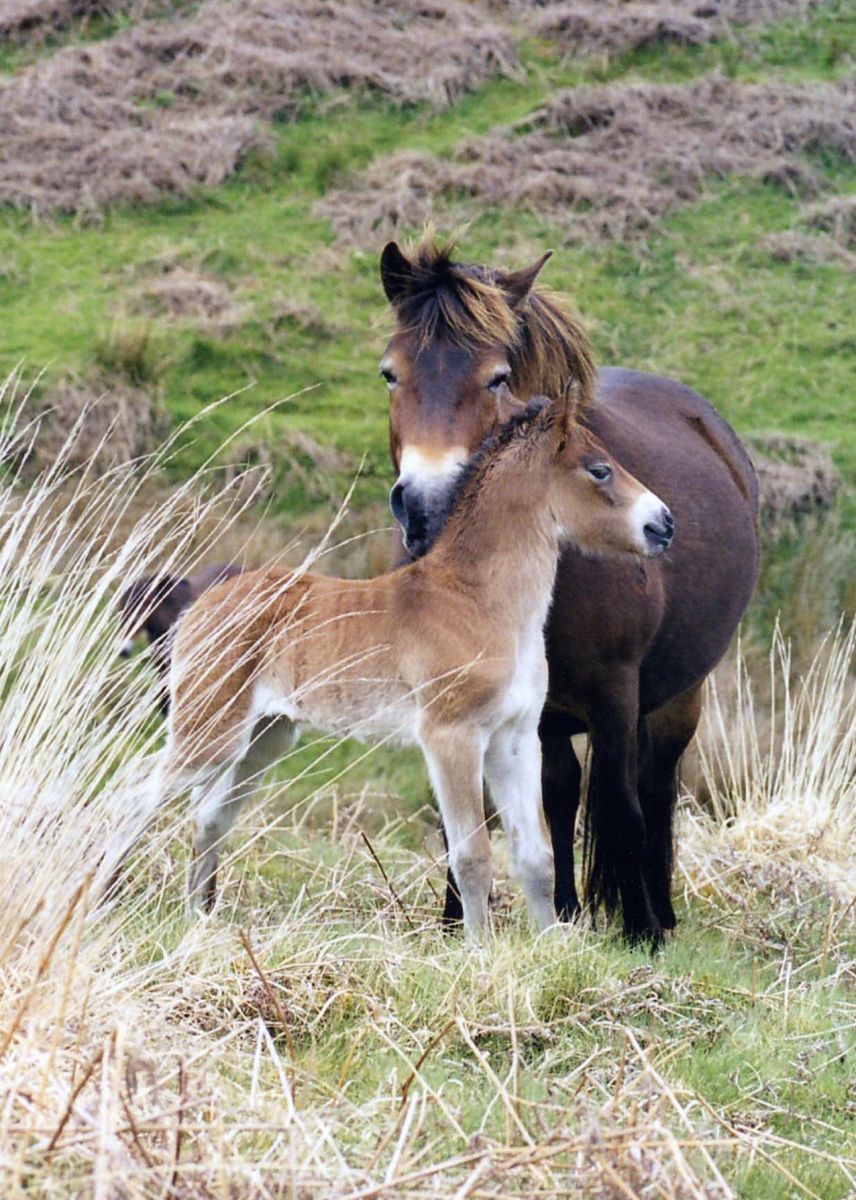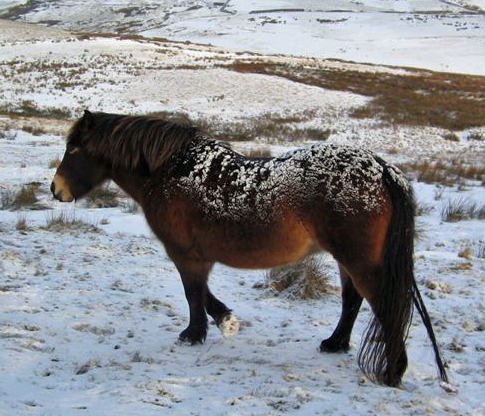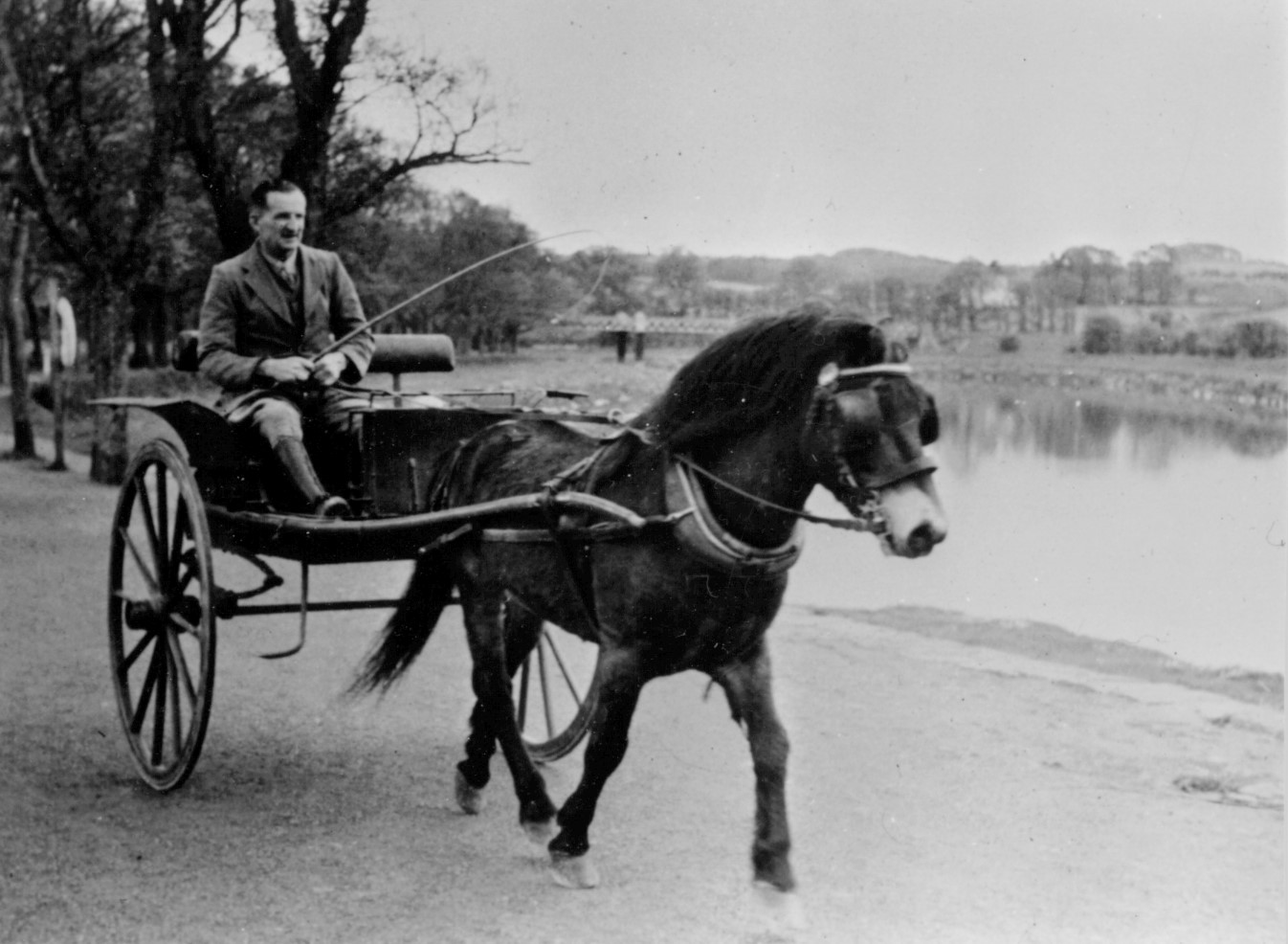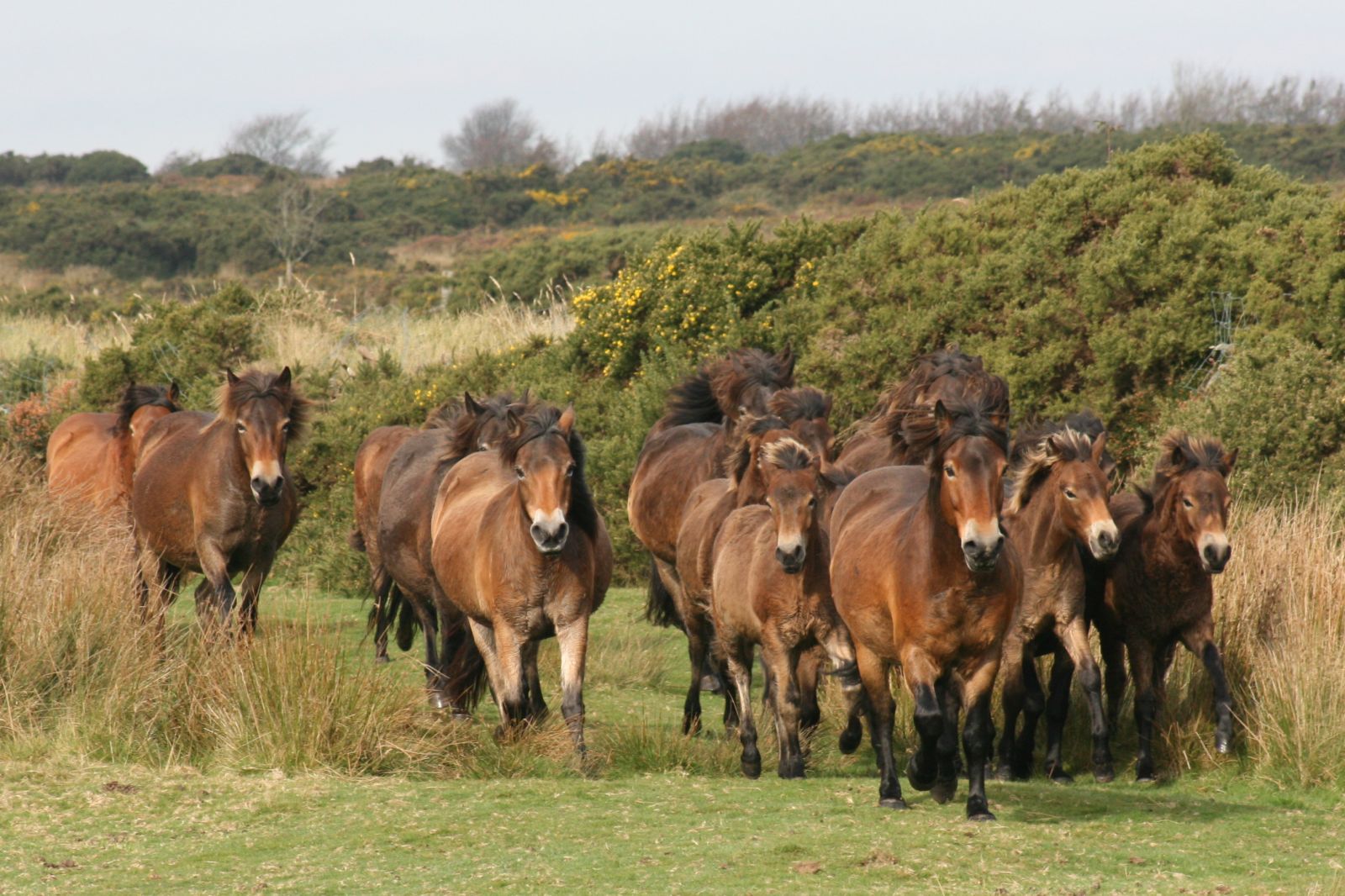Exmoor ponies – the heart and soul of Exmoor
7 June 2018
At the end of WWII, just fifty Exmoor ponies were left in existence; only 6 were male. Extinction loomed and without the efforts of a few passionate people, Exmoor would have lost its indigenous ponies. Exmoor without its ponies – unthinkable; but why?
The natural history of the Exmoor pony places them soundly within the wild fauna, although being owned and their gene pool managed defies definitions of wild. Their role in agriculture and transport over many centuries means their story is also entwined within the social history of Exmoor’s people.

Each Exmoor pony is born equipped for survival. Its colouring and markings, anatomy and behaviour are adapted to escaping now long-forgotten predators. Exmoor dentition and metabolism ensure the ponies can thrive on the poor moorland vegetation, varying their diet in tune with the seasons. The challenge of Exmoor’s harsh weather is more than met by means of a coat structure that combines thermal insulation and water dispersal. Every Exmoor pony characteristic speaks of natural selection; there is no sign of features being shaped to some human purpose. An Exmoor pony is ecologically on a par with Exmoor’s red deer and cannot be viewed in natural history terms as akin to the cattle and sheep that also graze the moors.
Yet ownership by people is significant. Herd owners decide on which stallions and mares will contribute their genes to the next generation – a big responsibility, as the future of the population will be shaped by those decisions. So people do have an effect on the ponies and the ponies certainly impact upon the psyche of Exmoor’s people. If judgements were made in purely economic terms, there would probably be no free-living pony herds but asked why they have a herd, many of the owners talk of tradition and heritage. There is pride in maintaining the continuity, a tangible, living link back to earlier generations.
Exmoor mare and foal. Photo credit: Sue Baker

Snow-thatched’ Exmoor mare demonstrating the efficient insulation provided by the winter coat. Photo: Sue Burger.
Before mechanisation, the pony herds were the source of animals for taming, training and relying upon for all manner of working roles. Ponies used for shepherding, hunting, ploughing, harrowing, transport to market, church, school, dances, delivering post – all are found in the records of Exmoor’s working and social life. In this, Exmoor is of course not unique and a number of National Parks boast histories of this intimate relationship between equine and human populations.

Today’s free-living Exmoor pony herds continue to be part of the grazing that maintains the moorland ecosystem. It was recognition of the importance of their contribution that led to a new role, beginning in the 1980s, as ‘conservation grazing’ animals. This resulted in a degree of expansion of the free-living population throughout the UK on nature reserves. Inevitably though, fewer foals born on Exmoor are now destined for such activity as the conservation grazers can breed their own replacements.
Most foals born into the herds on Exmoor cannot remain living the free life: only a few are retained as replacements for ageing breeding stock. Within agriculture, there is no place for pony power – the quad bike and all-terrain vehicles reign supreme, understandably given the realities of hill farming. Leisure pursuits of riding and driving have taken over from agricultural and transport roles and Exmoor ponies have adapted very well, especially in more recent decades with better training methods. However, demand for ponies that are ‘wants not needs’ is very vulnerable to the vagaries of the economy and Exmoor is no exception. This brings the bitter pill of having to constrain the breeding of ponies categorised as endangered.
Exmoor pony stallion being driven in Barnstaple in the 1940s. Photo: from The Exmoor Pony Archive.
Historically then, the ponies were vital to the functioning of Exmoor’s farms and communities – at the heart of almost everything. Times have changed: today, they remain an important part of Exmoor National Park, high on the list of reasons why people visit Exmoor. Visitors and locals alike assemble to see the herds gathered off the moorland enclosures in the autumn: seeing this ancient tradition stirs an emotional response in many onlookers. So perhaps today, Exmoor ponies are better described as part of the soul of Exmoor rather than its heart.

Gathering Exmoor ponies from Withypool Common in 2007. Photo credit: Sue Baker
Whether wandering over the moor on a summer’s day and watching foals playing or finding the ponies after winter snow, with their backs ‘snow-thatched’, it is not their undeniable ecological importance or contribution to Exmoor’s tourism economy that first comes to my mind: it’s all about just how these remarkable animals play a part in making Exmoor feel so very special.
By Sue Baker,
Sue is an author of books including the Exmoor Pony Chronicles and Exmoor Ponies Survival of the Fittest: A Natural History
